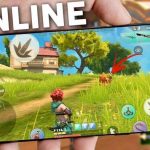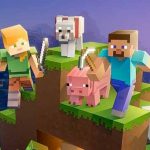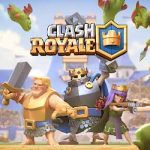Educational games are a great way to engage kids in learning and make it fun and enjoyable.
Educational Games
Educational games are a great way to learn new things and have fun at the same time. There are educational games available for all ages and skill levels, from preschool to adults. They can be used to teach a variety of subjects, including math, science, reading, writing, and history.
free educational games
There are a wealth of free educational games available online and on mobile devices, catering to a wide range of ages and interests. Here’s a selection of some highly-rated and engaging options:
For Preschoolers (ages 2-5)
- ABCya!: This website offers a vast array of interactive games that teach letters, sounds, counting, and basic math concepts. The colorful and engaging interface keeps children entertained while they learn.
- Khan Academy Kids: This free app provides a variety of interactive games that focus on early learning skills like colors, shapes, numbers, and letters. The app’s adaptive learning system adjusts to each child’s progress, ensuring a personalized learning experience.
- Sesame Street Games: Inspired by the iconic children’s television show, this website features games based on popular Sesame Street characters and storylines. The games promote literacy, numeracy, and problem-solving skills in a fun and engaging manner.
- Dr. Panda: This app offers a series of educational games that revolve around different themes, such as animals, the environment, and even outer space. The games encourage creativity, exploration, and problem-solving skills.
fun educational games
For Elementary School Students (ages 5-12)
- Prodigy Math: This online game-based platform teaches math skills to kids in grades 1-8. The game’s engaging storyline and quest-based format keep children motivated while they improve their math abilities.
- Starfall: This website provides a comprehensive collection of interactive games that cover a wide range of subjects, including math, reading, phonics, and grammar. The games are designed to be both fun and challenging, making learning an enjoyable experience.
- CodeCombat: This online game teaches kids the fundamentals of coding using a fantasy role-playing game format. As they progress through the game, they gain coding skills and solve puzzles while exploring a virtual world.
- Zearn: This website offers a variety of interactive math games for elementary school students. The games are aligned with Common Core State Standards and provide personalized learning experiences to suit each child’s needs.
For Middle School Students (ages 11-13)
- Khan Academy: This website offers a comprehensive collection of interactive lessons and exercises covering a variety of subjects, including math, science, history, and art. The platform’s personalized learning approach caters to individual needs and learning styles.
- Memrise: This language learning app gamifies the process of learning new languages. The app utilizes flashcards, spaced repetition, and interactive exercises to help students build vocabulary and grammar skills.
- Minecraft Education Edition: This version of the popular sandbox game is designed specifically for educational purposes. Teachers can create custom learning experiences using Minecraft’s blocks and mechanics to teach a variety of subjects.
- Quizizz: This online platform allows teachers to create and share quizzes and interactive games with their students. The quizzes can be tailored to specific subjects and learning objectives, making them an effective tool for assessment and review.
For High School Students (ages 14-18)
- IXL: This comprehensive online learning platform provides personalized learning plans in a variety of subjects, including math, science, English, and history. The platform’s adaptive algorithm adjusts to each student’s progress, ensuring they receive the appropriate level of challenge.
- Khan Academy College Prep: This website offers a variety of courses designed to help students prepare for college-level math, science, and English courses. The courses cover essential concepts and provide practice problems to help students succeed in their academic endeavors.
- MIT Scratch: This visual programming language is designed for kids and teenagers to learn about coding while creating their own interactive stories, games, and animations. Scratch’s drag-and-drop interface makes it easy to learn the basics of programming and express creativity through coding.
Best free online educational games
There are a wide variety of free online educational games available, so you can find games that are appropriate for all ages and skill levels. Some of the most popular free online educational games include:
Minecraft
Minecraft is a sandbox video game that allows players to build and create their own virtual world. The game is popular with kids and is also educational, as it promotes creativity, problem-solving, and spatial awareness.
Minecraft Education Edition Review and Guide
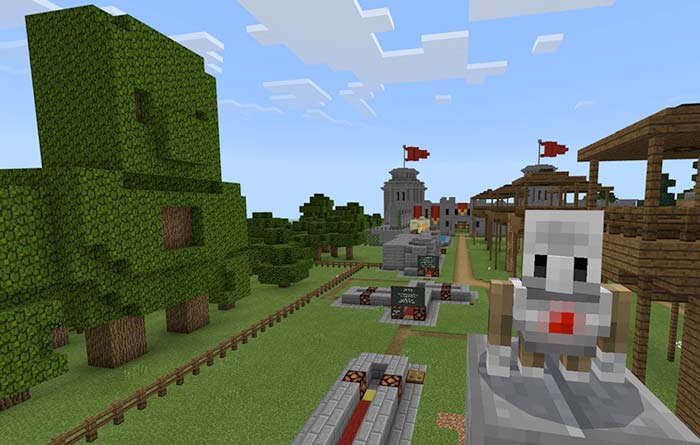
Minecraft is a popular sandbox game that has been around for over a decade, and it has evolved significantly over the years. Minecraft Education Edition is a version of the game that has been designed specifically for educational purposes, and it has become a popular tool for teachers and parents alike. In this review and guide, we’ll take a closer look at Minecraft Education Edition and explore its features, benefits, and potential drawbacks.
What is Minecraft Education Edition?
Minecraft Education Edition is a modified version of the original Minecraft game that is tailored to the needs of educators and students. It includes all the familiar features of Minecraft, such as building, crafting, and exploring, but it also includes educational tools and resources that can be used to teach a variety of subjects, from history and science to math and coding. Minecraft Education Edition is available on Windows 10, macOS, and iPad.
Features and Benefits
One of the main benefits of Minecraft Education Edition is that it can make learning fun and engaging for students. By using Minecraft as a teaching tool, educators can create interactive and immersive learning experiences that can help students better understand complex concepts and develop important skills, such as problem-solving, collaboration, and creativity.
Minecraft Education Edition also includes a range of educational resources, including lesson plans, curriculum guides, and learning activities, that can be used by educators to teach a variety of subjects. For example, students can explore historical sites in Minecraft, learn about geometry by building structures, or even learn to code using the game’s built-in Code Builder tool.
In addition to its educational benefits, Minecraft Education Edition also offers a safe and controlled environment for students to play and learn in. The game includes features such as classroom management tools, chat moderation, and a whitelist system that allows teachers to control who can access the game.
Drawbacks
One potential drawback of Minecraft Education Edition is that it can be complex and time-consuming to set up and manage, particularly for educators who are not familiar with the game. Additionally, some educators may find that the game’s open-ended nature and lack of structured content can make it difficult to use as a teaching tool.
Another potential issue is that Minecraft Education Edition requires a subscription, which can be a barrier for some schools and educators who may not have the budget to invest in it.
Guide
If you’re interested in using Minecraft Education Edition in your classroom, here are some tips to help you get started:
- Familiarize yourself with the game: Before using Minecraft Education Edition in your classroom, it’s important to become familiar with the game and its features. You can start by playing the game yourself or watching tutorial videos online.
- Plan your lessons: Minecraft Education Edition is a powerful tool, but it’s important to have a clear plan in place before using it in your classroom. Consider which subjects and concepts you want to teach, and how you can use the game to reinforce those ideas.
- Use the educational resources: Minecraft Education Edition includes a range of educational resources, including lesson plans, curriculum guides, and learning activities. Take advantage of these resources to save time and ensure that your lessons are effective.
- Encourage collaboration: Minecraft Education Edition is a great tool for promoting collaboration and teamwork among students.
Overall, Minecraft Education Edition is a powerful tool that can help educators create engaging and immersive learning experiences for their students. With its wide range of educational resources and flexible gameplay, it can be used to teach a variety of subjects and skills, and it can make learning fun and exciting for students. While there are some potential drawbacks to using Minecraft Education Edition, its benefits far outweigh its limitations, and it’s definitely worth considering for any educator who wants to use technology to enhance their teaching.
BrainPOP
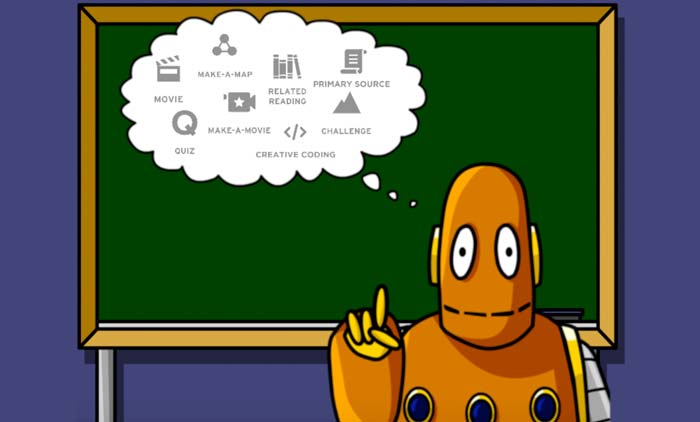
BrainPOP is an educational website that provides animated educational content for students of all ages. The website features over 1,000 short animated movies on a variety of topics, including science, math, social studies, English, health, and arts and music. In this review and guide, we’ll take a closer look at BrainPOP and explore its features, benefits, and potential drawbacks.
What is BrainPOP?
BrainPOP is an online learning platform that provides animated educational videos, games, quizzes, and activities for students in grades K-12. The website features over 1,000 short animated movies that cover a wide range of subjects, from history and science to math and coding. Each movie is accompanied by interactive quizzes and activities that reinforce the concepts covered in the video.
Features and Benefits
One of the main benefits of BrainPOP is that it provides engaging and interactive educational content that can make learning fun and exciting for students. The animated movies are entertaining and informative, and they’re designed to capture students’ attention and keep them engaged.
BrainPOP also includes a range of features and resources that can be used by educators and parents to support student learning. The website includes lesson plans, standards alignment, quizzes, and assessments that can be used to assess student learning and track progress.
Another benefit of BrainPOP is that it can be used in a variety of settings, including classrooms, homes, and libraries. The website is accessible on desktop and mobile devices, and it can be used by students of all ages and abilities.
Drawbacks
One potential drawback of BrainPOP is that it may not be suitable for all learners. The animated movies and activities are designed to appeal to visual learners, but students who prefer auditory or kinesthetic learning may not find them as effective.
Another potential issue is that BrainPOP is a subscription-based service, which can be a barrier for some schools and educators who may not have the budget to invest in it.
Overall, BrainPOP is a valuable educational resource that can help educators and parents provide engaging and interactive learning experiences for their students. With its wide range of educational content and resources, it can be used to teach a variety of subjects and skills, and it can make learning fun and exciting for students. While there are some potential drawbacks to using BrainPOP, its benefits far outweigh its limitations, and it’s definitely worth considering for any educator or parent who wants to enhance their child’s education.
Guide
If you’re interested in using BrainPOP to support your child’s education, here are some tips to help you get started:
- Explore the website: Take some time to explore the BrainPOP website and familiarize yourself with its features and resources. Watch some of the animated movies and try out some of the quizzes and activities to get a sense of how they work.
- Identify your child’s learning style: Before using BrainPOP, it’s important to identify your child’s learning style. If your child is a visual learner, they may find the animated movies and activities to be highly effective. However, if your child prefers auditory or kinesthetic learning, you may need to supplement BrainPOP with other resources.
- Set learning goals: BrainPOP provides a wide range of educational content, so it’s important to set clear learning goals for your child. Identify the subjects and skills you want your child to learn, and use BrainPOP to reinforce those concepts.
- Use the resources: BrainPOP includes a range of resources, including lesson plans, standards alignment, quizzes, and assessments. Take advantage of these resources to support your child’s learning and track their progress.
- Supplement with other resources: While BrainPOP is a valuable resource, it shouldn’t be the only resource you use to support your child’s education. Supplement it with other resources, such as textbooks, educational games, and hands-on activities to provide a well-rounded learning experience.
- Consider a subscription: If you’re interested in using BrainPOP regularly, consider purchasing a subscription. BrainPOP offers a variety of subscription options, including individual, classroom, and school-wide subscriptions.
- Monitor your child’s progress: Use BrainPOP’s assessment tools to monitor your child’s progress and identify areas where they may need additional support. You can also use this information to adjust your child’s learning goals and adapt your teaching approach as needed.
Overall, BrainPOP is a valuable educational resource that can help support your child’s learning and provide engaging and interactive educational content. By following these tips and using BrainPOP in combination with other resources, you can create a well-rounded learning experience that helps your child thrive.
Math Blaster
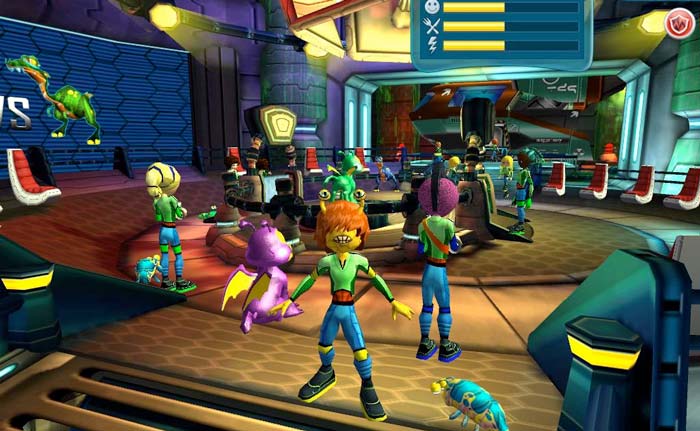
Math Blaster is a popular educational video game designed to help children improve their math skills. The game is set in a futuristic world where players take on the role of a Blaster Cadet who must complete various math-related challenges and missions.
Review:
Math Blaster is a fun and engaging game that provides a unique way for children to learn math. The game’s futuristic setting and colorful graphics are sure to capture the attention of young players, while the challenging math problems and puzzles will keep them engaged and motivated.
One of the things I appreciate about Math Blaster is the variety of math topics that are covered. From basic arithmetic to geometry and algebra, the game covers a wide range of math concepts in a way that is both fun and accessible. The game also offers different levels of difficulty, allowing children to progress at their own pace and challenge themselves as they improve their skills.
Another great feature of Math Blaster is the ability to customize the game to suit your child’s needs. Parents and teachers can create personalized learning profiles for each child, allowing them to focus on specific math topics and track their progress over time.
Guide:
Here are some tips for getting the most out of Math Blaster:
- Start with the basics: If your child is new to Math Blaster, start with the easier levels and gradually work your way up. This will give them a chance to get familiar with the game mechanics and build their confidence before tackling more challenging problems.
- Use the customization options: Take advantage of the game’s customization options to tailor the learning experience to your child’s needs. Create a personalized learning profile that focuses on the specific math topics your child needs help with, and use the progress tracking tools to monitor their improvement.
- Supplement with other resources: While Math Blaster is a great tool for improving math skills, it’s important to supplement with other resources as well. Use textbooks, workbooks, and other educational games to provide a well-rounded learning experience.
- Make it fun: One of the best things about Math Blaster is that it’s fun and engaging. Encourage your child to approach the game as a fun challenge rather than a chore, and reward them for their progress and achievements.
Overall, Math Blaster is an excellent educational tool that can help children improve their math skills while having fun at the same time. By following these tips and using Math Blaster in combination with other resources, you can help your child build a strong foundation in math that will serve them well in the years to come.
Animal Crossing
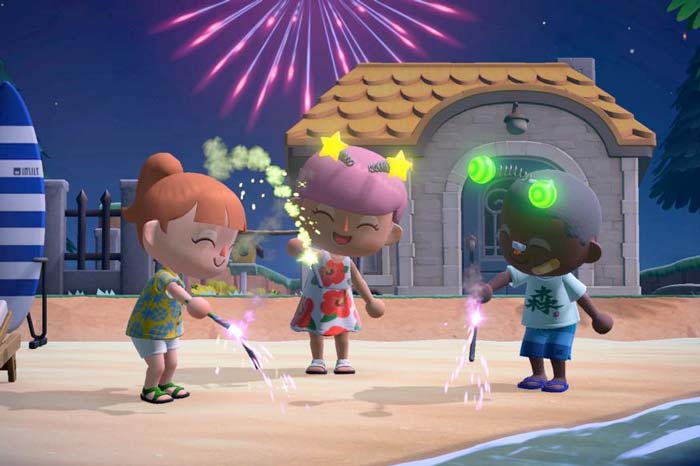
Animal Crossing is a popular video game series that allows players to live in a virtual village inhabited by anthropomorphic animals. The game provides a unique and immersive experience that allows players to interact with the environment, cultivate the land, and build relationships with the villagers.
Review:
Animal Crossing is a fun and addictive game that offers a unique gaming experience. The game’s charming graphics and delightful sound effects are sure to captivate players of all ages, while the open-ended gameplay allows for endless hours of exploration and experimentation.
One of the things I appreciate about Animal Crossing is the emphasis on community building and relationship building. The game encourages players to interact with the villagers, build friendships, and participate in community events. This helps to foster a sense of community and belonging, which is a valuable lesson for children to learn.
Another great feature of Animal Crossing is the opportunity to learn about nature and the environment. The game allows players to cultivate the land, grow crops, and even catch fish and bugs. This provides a unique opportunity for children to learn about the natural world in a fun and engaging way.
Guide:
Here are some tips for getting the most out of Animal Crossing:
- Take your time: Animal Crossing is a game that rewards patience and persistence. Take your time exploring the village, building relationships with the villagers, and cultivating the land. Don’t rush through the game, as you may miss out on some of the more rewarding experiences.
- Experiment and explore: Animal Crossing is a game that encourages experimentation and exploration. Try new things, plant different crops, and catch different fish and bugs. You never know what you might discover!
- Get involved in community events: Animal Crossing features a variety of community events, such as fishing tournaments and bug-catching contests. Participate in these events to build relationships with the villagers and earn rewards.
- Use the game’s customization options: Animal Crossing offers a variety of customization options, such as designing your own clothes and furniture. Take advantage of these options to create a village that reflects your personality and style.
Overall, Animal Crossing is a unique and engaging game that offers a fun and educational experience for children. By following these tips and taking the time to explore the game’s many features, you can create a rewarding and memorable gaming experience for your child.
Code.org
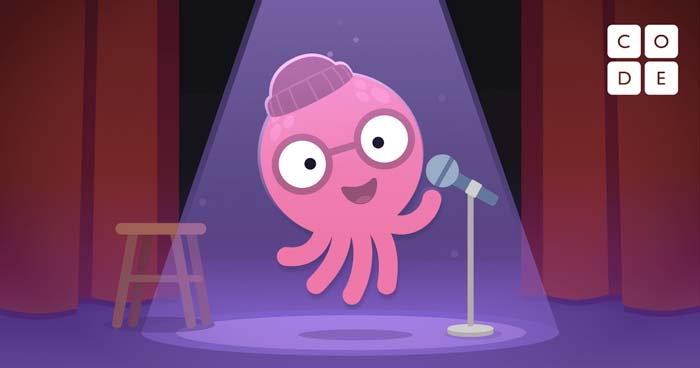
Code.org is an online platform that offers a range of resources for learning to code. The platform is designed for children and offers a fun and engaging way to learn the fundamentals of computer programming.
Review:
Code.org is a valuable resource for anyone interested in learning to code. The platform offers a range of free resources, including video tutorials, coding challenges, and even entire courses. The lessons are well-structured and easy to follow, and the platform is designed to be engaging and fun for children.
One of the things I appreciate about Code.org is the way it breaks down complex concepts into simple, easy-to-understand terms. The lessons are designed to be accessible to children of all ages and abilities, and the platform offers a range of resources for beginners through to more advanced learners.
Another great feature of Code.org is the way it encourages collaboration and teamwork. Many of the lessons involve working with other students to solve coding challenges and complete projects. This helps to foster a sense of community and encourages students to work together and learn from one another.
Guide:
Here are some tips for getting the most out of Code.org:
- Start with the basics: If you’re new to coding, it’s a good idea to start with the basics. Code.org offers a range of resources for beginners, including video tutorials and coding challenges. Take your time and work through the lessons at your own pace.
- Practice, practice, practice: Coding is a skill that takes time and practice to develop. Make sure to spend plenty of time practicing and experimenting with different coding concepts. Don’t be afraid to make mistakes – that’s all part of the learning process!
- Join a coding community: Code.org offers a range of opportunities to connect with other students who are learning to code. Join a coding community to share your experiences, ask questions, and learn from other students.
- Work on coding projects: One of the best ways to develop your coding skills is by working on coding projects. Code.org offers a range of projects for students to work on, including creating animations, games, and even mobile apps.
Overall, Code.org is a valuable resource for anyone interested in learning to code. By following these tips and taking advantage of the resources available on the platform, you can develop your coding skills and create a rewarding and engaging learning experience for yourself or your child.
Scratch

Scratch is a free online platform designed for children to learn the fundamentals of programming. It offers a wide range of tools and resources to help children develop their coding skills while having fun and being creative.
Review:
Scratch is a fantastic platform for kids to learn how to code in a fun and engaging way. It’s designed to be user-friendly and easy to navigate, with a drag-and-drop interface that makes it easy to create animations, games, and interactive stories.
One of the best things about Scratch is its flexibility. The platform allows children to create almost anything they can imagine, from simple games to complex animations. This encourages creativity and helps to keep children engaged and motivated.
Another great feature of Scratch is the community aspect. Users can share their projects with others and even collaborate on projects with friends. This creates a sense of community and encourages children to learn from each other.
Guide:
Here are some tips for getting the most out of Scratch:
- Start with the basics: Scratch is designed to be user-friendly, but it’s still important to start with the basics. Begin with simple projects and work your way up to more complex ones.
- Experiment: One of the best things about Scratch is its flexibility. Encourage children to experiment with different tools and features to see what they can create.
- Take advantage of resources: Scratch offers a wide range of resources to help children learn to code. These include tutorials, videos, and even a help section that answers common questions.
- Share projects: Sharing projects with others is a great way to get feedback and learn from other Scratch users. Encourage children to share their projects and collaborate with others on projects.
- Be patient: Coding can be frustrating at times, but it’s important to be patient and persistent. Encourage children to keep trying and not to give up if they encounter challenges.
Overall, Scratch is a fantastic platform for children to learn how to code. By following these tips and taking advantage of the resources available on the platform, children can develop their coding skills while having fun and being creative.
TypingClub
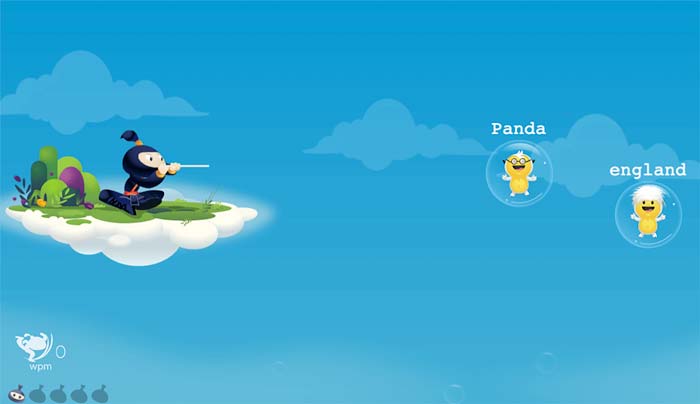
TypingClub is a free online typing program that is designed to help children improve their typing skills. It offers a range of tools and resources to help children learn how to type quickly and accurately.
Review:
TypingClub is a fantastic tool for children who want to improve their typing skills. It’s designed to be user-friendly and easy to navigate, with a range of features that make learning to type fun and engaging.
One of the best things about TypingClub is its adaptability. The program adjusts to the individual needs of each student, so children can progress at their own pace. This allows children to learn how to type in a way that suits their learning style and abilities.
Another great feature of TypingClub is the range of exercises and lessons available. The program offers a wide range of typing exercises that gradually increase in difficulty, so children can progress from beginner to advanced levels. The lessons are also designed to be fun and engaging, with games and interactive activities that help to keep children motivated.
Guide:
Here are some tips for getting the most out of TypingClub:
- Set goals: Setting goals is a great way to motivate children to improve their typing skills. Encourage them to set realistic goals and track their progress using the program’s progress reports.
- Practice regularly: Like any skill, typing requires regular practice to improve. Encourage children to practice for at least 10-15 minutes each day to build their skills.
- Use the program’s features: TypingClub offers a range of features, including speed tests, typing games, and practice exercises. Encourage children to use these features to improve their typing skills.
- Focus on accuracy: Accuracy is just as important as speed when it comes to typing. Encourage children to focus on typing accurately, even if it means typing more slowly at first.
- Be patient: Typing can be challenging, especially for beginners. Encourage children to be patient and persistent, and remind them that improvement takes time.
Overall, TypingClub is a fantastic tool for children who want to improve their typing skills. By following these tips and taking advantage of the program’s features, children can develop their typing skills while having fun and being engaged.
Civilization VI
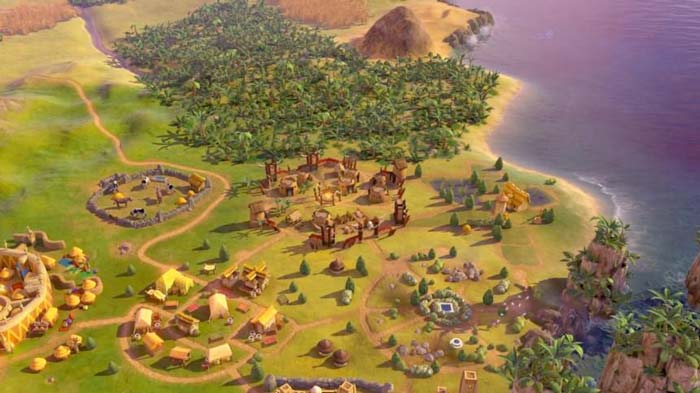
Civilization VI is a turn-based strategy game that takes players on a journey through human history, from the ancient world to modern times. In the game, players build and lead their own civilization, making decisions about everything from city management to military strategy.
Review:
Civilization VI is a deep and engaging strategy game that offers hours of gameplay for both new and experienced players. The game’s attention to detail and historical accuracy make it an immersive experience that feels like a journey through time.
One of the best things about Civilization VI is its complexity. The game offers a wide range of options and choices, allowing players to customize their experience and play the game in different ways. Whether you prefer to focus on diplomacy, cultural achievements, or military conquest, there is a path for every player.
Another great feature of Civilization VI is the game’s AI. The computer-controlled opponents are smart and challenging, making for a satisfying experience even for veteran players. The game also offers a multiplayer mode, allowing players to compete against each other for dominance on the world stage.
Guide:
Here are some tips for getting the most out of Civilization VI:
- Plan ahead: Civilization VI is a complex game with many moving parts. To be successful, it’s important to plan ahead and think strategically about your decisions.
- Build your empire: The key to success in Civilization VI is building a strong and prosperous empire. Focus on building cities, expanding your borders, and managing your resources wisely.
- Choose your victory condition: Civilization VI offers a range of victory conditions, including cultural, scientific, and military victories. Choose the victory condition that aligns with your playstyle and focus your efforts on achieving it.
- Make alliances: Diplomacy is an important part of Civilization VI. Make alliances with other civilizations to gain advantages and protect yourself from attack.
- Manage your military: Military strategy is important in Civilization VI. Build up your army, plan your attacks carefully, and be prepared to defend yourself against aggressive opponents.
Overall, Civilization VI is a deep and engaging strategy game that offers something for everyone. By following these tips and focusing on building a strong and prosperous empire, players can achieve victory and become a true world leader.
Kerbal Space Program
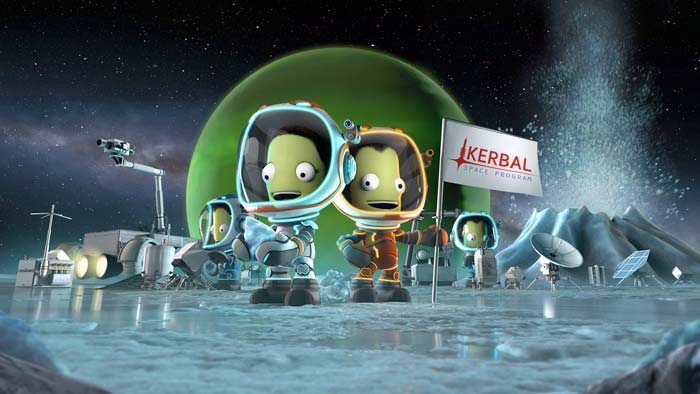
Kerbal Space Program is a unique and innovative game that combines the challenge of building and launching rockets with the excitement of space exploration. In the game, players are tasked with designing and piloting their own spacecraft, exploring the universe, and completing a range of challenging missions.
Review:
Kerbal Space Program is an incredible game that offers players a unique and immersive experience. The game’s combination of physics-based gameplay, challenging missions, and in-depth design tools make it a must-play for anyone interested in space exploration and rocketry.
One of the best things about Kerbal Space Program is its focus on realism. The game’s physics engine is incredibly accurate, making it feel like you’re actually piloting a spacecraft. Additionally, the game offers a wealth of resources for learning about real-world spaceflight and rocketry, making it a great educational tool as well.
Another great feature of Kerbal Space Program is its modding community. The game is highly moddable, allowing players to add new content, tools, and features to enhance their gameplay experience.
Guide:
Here are some tips for getting the most out of Kerbal Space Program:
- Start small: When you’re first starting out, it’s important to focus on building and launching small rockets. This will help you learn the basics of the game’s physics engine and give you a chance to experiment with different designs.
- Learn the controls: Kerbal Space Program has a steep learning curve, but once you master the game’s controls, you’ll be able to pilot your spacecraft with precision and ease.
- Experiment with different designs: The game’s design tools allow you to create a wide range of spacecraft, from small rockets to massive interplanetary vessels. Experiment with different designs to find what works best for your needs.
- Plan your missions: Kerbal Space Program offers a range of challenging missions, from simple satellite launches to complex interplanetary expeditions. Plan your missions carefully, taking into account factors like fuel consumption, trajectory, and gravity.
- Join the community: Kerbal Space Program has a large and active community of players and modders. Join online forums and communities to share your experiences, ask for advice, and discover new content.
Overall, Kerbal Space Program is an amazing game that offers endless possibilities for exploration and discovery. By following these tips and experimenting with different designs and missions, players can unlock the full potential of this incredible game.
Duolingo
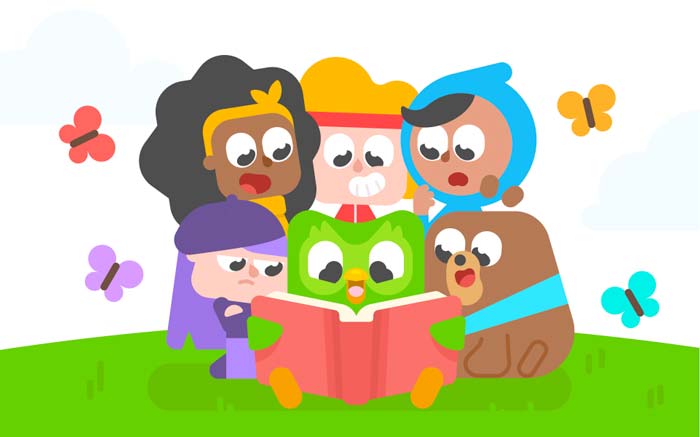
Duolingo is a language-learning app that has become increasingly popular in recent years. The app offers courses in over 40 different languages, and its gamified approach to language learning has made it an appealing choice for both adults and children. In this review, we will take a closer look at the features of Duolingo, and provide a guide to help you get started on your language-learning journey.
Overview of Duolingo
Duolingo is a free language-learning app that can be used on both Android and iOS devices, as well as on the web. The app offers courses in a variety of languages, including Spanish, French, German, Japanese, Chinese, and more. The courses are designed to be fun and engaging, with a focus on helping learners to build their vocabulary, grammar, and reading and writing skills.
One of the unique features of Duolingo is its gamified approach to language learning. The app uses a point system and a series of challenges to encourage learners to continue practicing and improving their skills. Users can earn points for completing lessons, and can compete with friends or other users to see who can earn the most points.
Getting Started with Duolingo
Getting started with Duolingo is easy. Simply download the app or visit the website, create an account, and choose the language you would like to learn. From there, you can begin working through the lessons and challenges.
The app is designed to be self-paced, so you can work through the lessons at your own speed. Each lesson covers a specific topic, such as basic vocabulary, grammar rules, or sentence structure. The lessons are structured like a game, with users earning points and unlocking new levels as they progress.
Advanced Features of Duolingo
In addition to the basic lessons and challenges, Duolingo also offers a number of advanced features for more experienced learners. These include:
- Stories: Duolingo Stories are short, interactive tales that are designed to help learners improve their listening and reading comprehension skills. The stories are available in a variety of languages and cover a range of topics, from travel and culture to science and history.
- Podcasts: Duolingo also offers a series of podcasts that are designed to help learners improve their listening and comprehension skills. The podcasts cover a range of topics and are available in a variety of languages.
- Certification: For users who want to prove their language proficiency, Duolingo offers a series of certification exams that are recognized by a number of universities and employers. Users can take the exams online and receive a certificate if they pass.
Pros and Cons of Duolingo
Pros:
- Duolingo is free to use, making it an accessible option for learners on a budget.
- The gamified approach to language learning is engaging and makes it easy to stay motivated.
- The app is designed to be self-paced, so users can work through the lessons at their own speed.
- The app offers courses in a variety of languages, making it a great choice for people interested in learning a less commonly taught language.
Cons:
- While Duolingo is a great way to build basic language skills, it may not be enough for users who want to become fully proficient in a language.
- The app relies heavily on multiple-choice questions, which may not accurately reflect a user’s language skills.
The gamified approach may not appeal to all learners.
In conclusion, Duolingo is an excellent app that makes language learning fun and engaging for users of all ages. With its user-friendly interface and innovative approach, the app has revolutionized the way people learn new languages. Whether you’re a beginner or an advanced learner, Duolingo is a great tool to add to your language-learning arsenal. So, if you’re looking to expand your linguistic skills, give Duolingo a try and see how it can help you achieve your language-learning goals.
Conclusion
In conclusion, video games can be a great way for kids to learn new skills and concepts in a fun and engaging way. The 10 video games listed above are not only entertaining but also educational, and they cover a wide range of subjects, including math, coding, language learning, history, and space exploration. By playing these games, kids can improve their problem-solving, critical thinking, and social skills, while also having fun.
FAQ
Yes, video games can be good for kids, as they can help them develop important cognitive, social, and emotional skills.
No, educational video games can be just as fun and engaging as regular video games, and they can also teach kids new skills and concepts.
Yes, some studies have shown that playing certain video games can improve academic performance, particularly in subjects like math and science.
No, not all video games are appropriate for kids, and parents should be careful when choosing games for their children. It’s important to check the game’s content rating and read reviews before purchasing it.
Yes, video games can be addictive, particularly for children who may have difficulty controlling their screen time. It’s important for parents to set limits and monitor their children’s gaming habits

